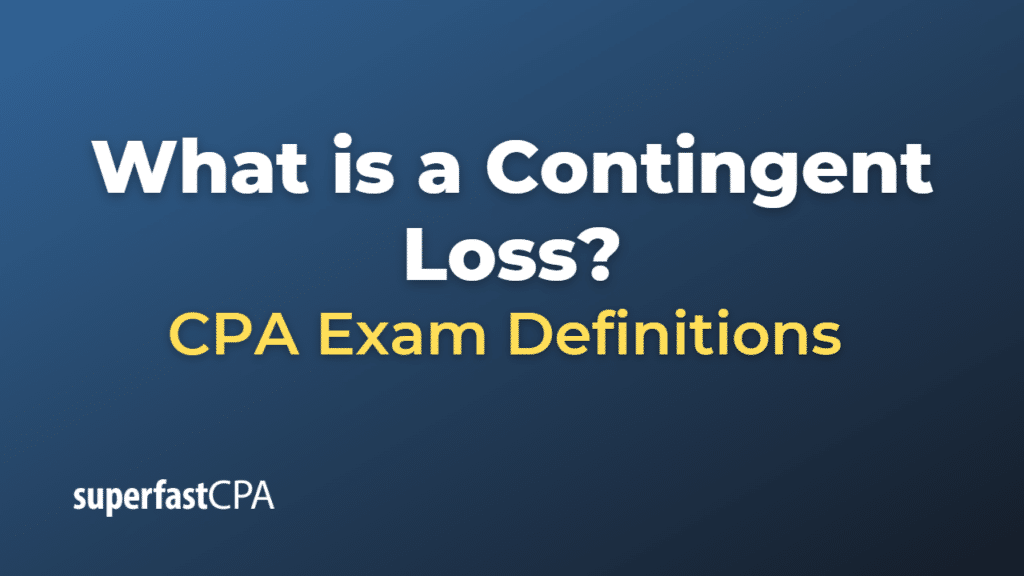Contingent Loss
A contingent loss is a potential financial loss that a company may incur in the future, depending on the outcome of a specific event or situation. Contingent losses are uncertain and not yet realized, as they depend on the occurrence of future events that are beyond the company’s control. These potential losses may arise from various situations, such as lawsuits, product warranties, environmental liabilities, taxes, or other contingent liabilities.
When a company faces a contingent loss, accounting standards typically require it to assess the likelihood of the loss occurring and the amount of the potential loss. If the company determines that the contingent loss is both probable and reasonably estimable, it should record a provision for the loss on its balance sheet. A provision is an amount set aside to cover the expected loss, which reduces the company’s net income and retained earnings.
If the likelihood of the contingent loss occurring is more than remote but less than probable, or if the amount of the potential loss cannot be reasonably estimated, the company should disclose the contingent loss in the notes to its financial statements, providing information about the nature of the contingency and an estimate of the potential loss or range of losses, if possible.
Contingent losses can have a significant impact on a company’s financial position and risk profile, as they represent potential future cash outflows and obligations that could negatively affect the company’s liquidity, profitability, and financial stability. Investors, creditors, and other stakeholders may take contingent losses into account when assessing a company’s financial health and risk profile.
Example of a Contingent Loss
Let’s consider an example of a contingent loss arising from a product warranty:
ElectroCorp, an electronics manufacturer, offers a one-year warranty on its flagship smartphone, promising to repair or replace any defective units at no cost to the customers. ElectroCorp has sold 100,000 units of the smartphone during the year. Based on historical data and quality control metrics, ElectroCorp estimates that 2% of the smartphones sold may experience defects within the warranty period, resulting in warranty claims.
In this situation, ElectroCorp faces a contingent loss related to the potential warranty claims it may have to fulfill in the future. The actual number of warranty claims and the associated costs are uncertain, as they depend on the occurrence of defects and customers submitting warranty claims.
To account for this contingent loss, ElectroCorp would need to estimate the probable number of warranty claims and the cost per claim. If the company estimates that 2,000 units (2% of 100,000) will be returned for warranty service at an average cost of $100 per unit, the total estimated contingent loss would be $200,000.
According to accounting standards, ElectroCorp should record a provision for the warranty claims on its balance sheet, as the contingent loss is both probable and reasonably estimable. The company would debit “Warranty Expense” for $200,000 and credit “Warranty Liability” for the same amount, recognizing the expected cost of fulfilling the warranty claims in its income statement and creating a liability on its balance sheet.
This contingent loss impacts ElectroCorp’s financial position and risk profile, as it represents a potential future cash outflow and obligation that could affect the company’s liquidity, profitability, and financial stability. Investors, creditors, and other stakeholders may take this contingent loss into account when assessing ElectroCorp’s financial health and risk profile.












